#berenguela de castilla
Explore tagged Tumblr posts
Text


Berenguela and Blanche of Castile
Daughters of Alfonso VIII of Castile and Eleanor of England, Berenguela maintained strong connections with her sister Blanche, Queen of France. Their letters are in Latin. Latin was still, at the beginning of the 13th century, the language of writing, while French and Castilian became the languages commonly spoken, even at court. Berenguela and Blanche were well-educated, competent and forceful like their formidable grandmother Eleanor of Aquitaine.
The two sisters will also lead a parallel existence, each exerting, in their own country, a comparable influence. Much like her younger sister Blanche in France, Berenguela presents an interesting case of co-rulership with her son in Castile. Furthermore, both have ties with warfare and played determinant roles in the success of military campaigns as well as access to – and maintenance of – the throne.
Berenguela and Blanche directed a great deal of their personal energy into assuring that all of their children were appropriately married. It was Blanche who suggested sending Joan of Ponthieu as a bride for her nephew Fernando after his first wife's death. Berenguela and Blanche became the mothers of fighting saints King Fernando III and King Louis IX.


In the Archives Nationales de France are nine letters written to King Louis VIII and his wife Blanche of Castile, during Louis’s brief reign from 1223 to 1226. These letters informed Louis VIII that Alfonso VIII of Castile had intended his throne to pass to a son of Louis and Blanche, if his own son Enrique died without heirs. Louis VIII should therefore immediately send his son to Castile, where his correspondents—the scions of several major Castilian noble houses—would take up arms to set him on the throne and overthrow the “foreigner” (alienus) who was in power. The most prominent of these Castilian magnates were Rodrigo Díaz de Cameros and Gonzalo Pérez de Molina. This conspiracy was an explicit attempt to dispose of the current Castilian monarchy and replace it with a new configuration of rulers. It was therefore a far more serious threat than either Rodrigo Díaz’s or Gonzalo Pérez’s earlier revolts had been. And it was aimed squarely at the legitimacy of the reigning monarchs.
The letters’ most perplexing feature is the suggestion that Blanche’s claim to the Castilian throne superseded Berenguela’s. Some historians have even taken this as evidence that Blanche was the elder sister, though that claim is patently false. Yet the plot to overthrow Fernando III was first of all an attempt to unseat Berenguela. It was through her that Fernando III claimed hereditary right and legitimate descent from Alfonso VIII. To say that Alfonso VIII had excluded Berenguela from the succession, and to describe Fernando as a “foreigner,” was to reject the Castilian identity that Berenguela had tried to reclaim during her ten years as a solitary queen in her father’s court, and that she had negotiated with varying success during her regency and the subsequent wars. It was to define her not as the daughter and sister of the latest kings of Castile, but as the cast-off wife of the king of León.
To be sure, Blanche and her sons were at least as French as Berenguela and Fernando III were Leonese. But the rebels were apparently willing to overlook this quibble; their appeal was directed as much to Louis VIII as to his queen. Besides, the threat of union with France was diminished by the fact that Blanche and Louis VIII had no fewer than five living sons at the time that they ruled France. The rebels never insisted that the son sent to them should be Louis VIII’s firstborn, and a younger brother’s accession in Castile considerably reduced the risk of union between the crowns. All five French princes were underage, but so much the better; the minorities of Alfonso VIII and Enrique I had proved how much power nobles could gain in a regency. Louis VIII was sufficiently intrigued by the rebels’ offer to have asked them for proof of their promised support. His wife, however, was likely to be less sympathetic. A combination of Blanche’s unwillingness to contribute to her older sister’s overthrow and Fernando III’s military successes after 1224 probably quashed the plot.
Sources:
JANNA BIANCHINI,THE QUEEN'S HAND: POWER AND AUTHORITY IN THE REIGN OF BERENGUELA OF CASTILE
Regine Pernoud, La Reine Blanche
#women in history#berenguela de castilla#berengaria of castile#blanca de castilla#blanche of castile#louis viii#fernando iii#louis ix#alfonso viii#eleanor of england#eleanor of aquitaine#french history#spanish history
33 notes
·
View notes
Text

Berenguela, la Grande (1179-1246). Por Francisco Contreras.
#lithograph#monarquía española#reino de españa#infantes de españa#infanta de castilla#reino de castilla#francisco contreras#regente de castilla#reyes de castilla#reina de castilla#berenguela I de castilla#casa de borgoña#kingdom of spain#kingdom of castile#house of burgundy
4 notes
·
View notes
Text
Santa Catalina disputando con un filósofo ante el tribunal del Emperador Majencio (Relieve, siglo XIII)
Se trata de un relieve fechado entre los años 1252 y 1286 (siglo XIII), realizado en mármol blanco, perteneciente a la colección Ars Casacuberta Marsans. Formó parte de la exposición temporal “Alfonso X, el legado de un rey precursor”, que tuvo lugar en el Museo de Santa Cruz, de Toledo, en 2022. Se cumplían los 800 años del nacimiento de este rey que nació el día 23 de noviembre de 1221,…
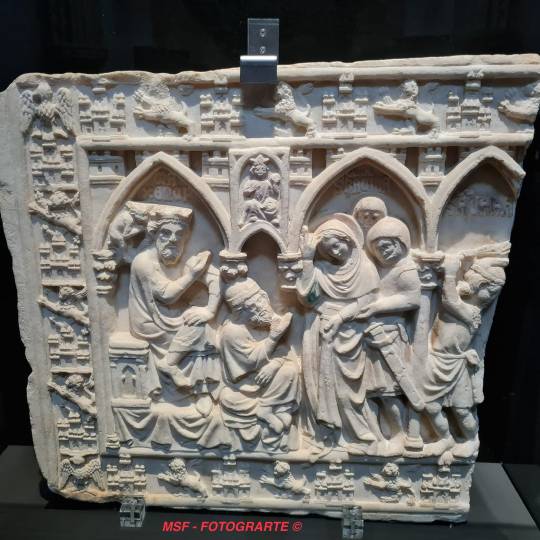
View On WordPress
#Alfonso X el Sabio#Barcelona#Beatriz de Suabia#Colección Ars Casacuberta Marsans#Edad Media#España#Exposiciones Temporales#Fernando III el Santo#Infanta Berenguela de Castilla (monja en Las Huelgas)#Monasterio de las Huelgas (Burgos)#Museo de Santa Cruz#Relieve#Siglo XIII#Toledo
4 notes
·
View notes
Text












Women’s History Meme || Sibling Relationships (1/5) ↬ Berenguela, reina de Léon y de Castilla and Blanca de Castilla, reine de France
Queen Berenguela of Castile (1180–1246) was, in her lifetime and for some time thereafter, a dominant figure on the political landscape of the kingdoms of Castile and Leon. She typified the medieval elite woman whose ordained role in life was to be a wife and mother. The political circumstances of her native Castile, however, complicated and even enhanced Berenguela’s reproductive responsibilities. As the eldest daughter of Alfonso VIII of Castile and his wife Leonor of England, Berenguela was at different points in her young life the presumed heir to the throne. The Castilians adhered to the Visigothic principle of partible inheritance. Although favoring sons, this principle meant that daughters had a claim to inheritance. Therefore, it was possible for a woman to inherit the throne when a male heir was lacking as had happened with Alfonso VI’s daughter Urraca in 1109 and with Berenguela in 1217. Berenguela’s awareness of and concern for her own lineage derived not only from a strong, involved identification with her natal family, based on her position as her father’s daughter, but also from her awareness of her own self as an element of that lineage. Her experiences and activities can be usefully contextualized by those of her numerous and important sisters, especially Urraca, Blanche, Leonor, and Constanza. They show ways in which Berenguela was like other elite women; indeed, her life could have turned out very much like one of theirs. Despite their individual circumstances, together they help demonstrate ways in which Berenguela was and was not alone in her experiences of family, marriage, motherhood, religion, and, above all, gender. Furthermore, the sisters were key elements of Berenguela’s family; throughout their lives, they remained in contact, if only for seemingly political reasons at times. Family visits, the fostering of children, and prayers for the dead suggest affective bonds as well as a deep sensibility of filial and sisterly piety among the members of this family. Berenguela’s sister Blanca (1188–1252) is better known as Blanche of Castile, queen of France, one of the most famous women of the Middle Ages. From the time of her marriage to the French heir Louis, Blanche was destined for significance, even if only as another female link in the seemingly miraculous chain of male inheritance that had secured the Capetian throne for generations. Three years after Blanche’s husband Louis became king, he was dead, and Blanche became regent both for her young son, Louis IX, and for the kingdom of France. Blanche became queen of France at a time when the institution of queenship seems to have undergone a shift, becoming increasingly relegated to the private, domestic world of the queen’s own household; at the very least, there is a change in the way documentation presented the queen’s activities at court. Although Blanche’s own political experiences were particular to her Capetian context, examining the several parallels between her experiences and those of her sister Berenguela points to certain consistencies in thirteenth-century royal motherhood and queenship. — Berenguela of Castile (1180–1246) and Political Women in the High Middle Ages by Miriam Shadis [old version]
#women's history meme#berengaria of castile#blanche of castile#house of ivrea#house of capet#medieval#spanish history#french history#european history#women's history#history#nanshe's graphics
34 notes
·
View notes
Text

HOY CELEBRAMOS A NUESTRO HERMANO SAN FERNANDO III, EL SANTO.
Fernando III, «el Santo», rey de León y de Castilla, hijo de Alfonso IX de León y de Berenguela de Castilla, nació el año 1198 en el reino leonés, probablemente cerca de Valparaíso (Zamora). Tradicionalmente se afirma que perteneció a la Tercera Orden Franciscana. Fue el rey de la reconquista del sur de España. Su visión política de altas miras es reconocida por los historiadores, y las gentes de toda clase y condición bendijeron su reinado sabio, ecuánime, prudente. En los territorios reconquistados por él, nunca hubo vencedores y vencidos. Con razón es proclamado «señor de la convivencia de cristianos, musulmanes y judíos». Contrajo dos matrimonios sucesivos, que fueron felices, y de ambos tuvo en conjunto trece hijos. Fue hombre de óptimos sentimientos y limpias costumbres. Además de administrar con sabiduría sus reinos, promovió las artes y las ciencias, y colaboró en la propagación de la fe. Vivió rodeado del respecto y afecto de unos y otros, y su muerte fue llorada por todos. Murió en Sevilla el 30 de mayo de 1252.-
10 notes
·
View notes
Text
Fernando III el Santo fue rey gracias a las dos esposas de su padre, Alfonso IX de León. La primera, Teresa de Portugal, logró que sus hijas cedieran sus derechos al trono de León en favor de Fernando. La segunda, su madre Berenguela, abdicó para nombrarlo rey de Castilla.


0 notes
Text
Nuestra Reina, Doña Letizia, la más Grande, después de Isabel I de Castilla y Doña Berenguela I de Castilla y León.
Supo estar con el pueblo, hablar, consolar y llorar con el pueblo; no como el chulo cobarde Presidente del Gobierno de España, el impresentable Sánchez.

Letizia en Paiporta (Valencia)
10 notes
·
View notes
Note
What do you think of Queen Berenguela of Castile?
I have not studied her extensively, but from what I have read about her, she was a smart and politically savvy woman. She let her son rule because she knew it was the best option for Castile, she actively participed in the politics of the kingdom, and thanks to her intervention the kingdoms of Castile and León were united in the person of her son, Fernando III.
1 note
·
View note
Photo

Queen Berenguela of Castile. By Francisco Prats y Velasco.
Nicknamed “the Great”, was queen regnant of Castile in 1217 and queen consort of León from 1197 to 1204.
When her father died, she served as regent for her younger brother Henry I in Castile until she succeeded him on his untimely death. Within months, she turned Castile over to her son, Ferdinand III, concerned that as a woman she would not be able to lead Castile's forces. However, she remained one of his closest advisors, guiding policy, negotiating, and ruling on his behalf for the rest of her life. She was responsible for the re-unification of Castile and León under her son's authority, and supported his efforts in the Reconquista.
#Francisco Prats y Velasco#monarquia española#reyes de españa#reyes de castilla#reinas de castilla#reina berenguela#reina de castilla#queen of castile#spain in the middle ages#house of ivrea#casa de borgoña#reconquista española#museo del prado
3 notes
·
View notes
Text
Berenguela

View On WordPress
#8409317559#9788409317554#Alfonso IX#Berenguela#Berenguela la Grande#Cascaborra Ediciones#Castilla y León#La reina doña Berenguela de Castilla#rey Fernando III
0 notes
Photo

Berenguela I de Castilla - José María Rodríguez de Losada
Berengaria (nicknamed The Great ; 1179 or 1180 – 8 November 1246) was queen regnant of Castile in 1217 and queen consort of León from 1197 to 1204. As the eldest child and heir presumptive of Alfonso VIII of Castile, she was a sought after bride, and was engaged to Conrad, the son of Holy Roman Emperor Frederick I Barbarossa. After his death, she married her cousin, Alfonso IX of León, to secure the peace between him and her father. She had five children with him before their marriage was voided by Pope Innocent III.
#Berenguela I de Castilla#José Maria Rodriguez de Losada#XIX century#people#portrait#paintings#art#arte#House Ivrea
0 notes
Text

Berenguela de Barcelona
She was a very beautiful and extremely graceful young girl who loved chastity and truth and all God-fearing people.
Berenguela was the daughter of Ramon Berenguer III, Count of Barcelona and his third wife Dolça I de Gévaudaun, Countess of Provence. Although her date of birth is unknown, the sources place it between 1108 and 1116. It is known that Berenguela had a good relationship with her older sister, María de Osona, who was the daughter of the first marriage of her father with María Rodríguez, the daughter of El Cid Campeador.
In 1128 Berenguela married Alfonso VII, King of León, Castile and Galicia. She becoming the first queen of the newly reigning dynasty of the House of Ivrea. In 1135, Alfonso VII was crowned “Emperor of Spain” (Imperator totius Hispaniae) in the Cathedral of León. The imperial couple had seven children, of whom Sancho III was King of Castile and Fernando II King of León. The daughters, Constanza and Sancha, became Queens consorts of France and Navarre.
Historians who have dedicated to studying her life consider that Berenguela de Barcelona was one of the characters who deserves a privileged position in the history of Spain. She actively participated in political life and was patroness of the arts. She accompanied her husband in the battles, stopped the uprising in Asturias and heroically resisted the besieged of Toledo by the Muslims. She also introduced a taste for Provencal troubadours to the kingdom, supported writers who narrated the exploits of El Cid and encouraged pilgrimages to Santiago de Compostela, where she was buried in 1149.

Berenguela nació en el prestigioso y rico condado de Barcelona como hija del conde Ramón Berenguer III y de su segunda esposa Dulce de Provenza. La joven barcelonesa destacó por su inteligencia y gran belleza, llegando su fama hasta la corte del rey Alfonso VII de Léon, Castilla y Galicia, hijo de la legendaria reina Urraca. Al parecer fue un noble, Armengol de Urgel, quien le facilitó los trámites para entrar en contacto con los condes de Barcelona. El rey de León tenía poco más de veinte años y no estaba casado, ni siquiera había ninguna candidatura seria para un matrimonio, que tarde o temprano tendría que celebrarse.
Una vez prometida al rey Alfonso VII, Berenguela de Barcelona emprendió un largo viaje. Desde Barcelona hasta la corte de su futuro marido, debía cruzar los dominios del rey aragonés Alfonso el Batallador, quien estaba en disputa con Castilla por cuestiones territoriales y fronterizas. Para evitarlo, Berenguela y su comitiva tuvieron que hacer parte del viaje por el sur de Francia, llegar hasta el Golfo de Vizcaya y fletar unas barcazas que, bordeando la costa cantábrica, les permitieran desembarcar en un puerto controlado por los leoneses.
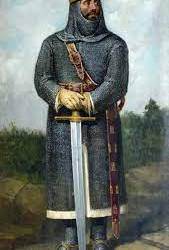
A finales de 1128 o enero de 1129, los prometidos contraían matrimonio en la villa de Saldaña. Con motivo de las celebraciones de los esponsales, que duraron varios días, se dice que tuvo lugar la primera corrida de toros celebrada en la Península. La pareja imperial tuvo siete hijos, destacándose Sancho III de Castilla y Fernando II de León. La joven reina forjó una gran amistad con su cuñada la infanta Sancha Raimúndez, llegando a ser ambas las principales consejeras de Alfonso VII. Berenguela participó en la política de forma activa, fue la principal responsable de apagar la rebelión del conde de Asturias Gonzalo Peláez y acompañó a su esposo a la guerra en muchas ocasiones, participando así de sus victorias.
En 1135 tuvo lugar la coronación de Alfonso VII como Imperator totius Hispaniae en la catedral de León, gran parte de los nobles presentes en el acto habían llegado gracias a los contactos de la reina y su familia; así su hermano Ramón Berenguer IV, Armengol de Urgel, el conde Alfonso Jordán de Tolosa, el de Montpellier, el duque de Gascuña, el de Foix y otros grandes señores del Sur de Francia. A ella, entonces, cupo el gran honor de ser la Emperatriz consorte de Hispania.

Nos dice la crónica de Alfonso VII que en 1139 la reina Berenguela fue la responsable de una heroica resistencia en Toledo. Habiendo partido su marido al sitio del castillo de Aurelia, encargó a su esposa la defensa de la ciudad. Pero la campaña se alargó demasiado y Toledo fue sitiada por las tropas musulmanas. Berenguela reunió un pequeño ejército, pero, consciente de su inferioridad, decidió intentar una jugada diplomática para tratar de evitar la lucha. Indignada por la destrucción de la torre de San Servando, cercana a la ciudad, Berenguela envió un mensajero con una carta al campo enemigo que decía lo siguiente:
"¿No conocéis que es mengua de caballeros y capitanes esforzados acometer a una mujer indefensa cuando tan cerca os espera el emperador? Si quereis pelear id a Aurelia y allí podréis acreditar que sois valientes, como aquí dejar demostrado que sois hombres de honor si os retiráis".
La reina Berenguela apareció además sentada sobre un trono real en una de las torres, rodeada de sus doncellas, que cantaban con tímpanos, cítaras, címbalos y salterios. Los musulmanes quedaron impresionados por la nobleza de la reina y levantaron inmediatamente el cerco, marchando a luchar contra Alfonso. Cuando el alcaide de Toledo, Nuño Alfonso, entró victorioso en la ciudad portando las cabezas de los emires de Sevilla y Córdoba, las mandó colgar de las torres del alcázar, pero la reina se apiadó, ordenando que las embalsamaran y enviaran a sus viudas en cofres de oro. Una torre en Toledo (la Torre de la Reina) recuerda la gesta de la reina Berenguela.
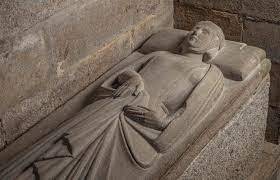
Berenguela es recordada como una prudente reina que sacrificó sus sentimientos dando prioridad a los intereses de la corona. Cuando de las infidelidades de su esposo con la noble asturiana Gontrodo Pérez nació una hija, doña Urraca, la reina perdonó a su esposo y quiso ganárselo mediante el cariño. Aún más, cuando Urraca casó con el rey de Navarra García el Restaurador, la reina Berenguela se encargó de preparar los esponsales con gran pompa y asistió, dando gran realce a la ceremonia. Mujer culta, Berenguela fue una gran mecenas y amante de las artes, a ella se debe el impulso de la poesía provenzal en el reino, apoyó a escritores que narraban las hazañas del Cid y fomentó el peregrinaje a Santiago de Compostela, donde fue enterrada. Su muerte fue muy lamentada, tanto que, según los historiadores de la época, el año 1149 fue usado en los documentos como punto de partida para fechar los acontecimientos, bajo la fórmula "año en que falleció la señora emperatriz".
#Berenguela de Barcelona#Berenguela Berenguer#Berengaria of Barcelona#Spanish history#women in history#Alfonso VII
26 notes
·
View notes
Text
2 notes
·
View notes
Text
SAN FERNANDO.
SAN FERNANDO. Fernando III, «el Santo», rey de León y de Castilla, hijo de Alfonso IX de León y de Berenguela de Castilla, nació el año 1198 en el reino leonés, probablemente cerca de Valparaíso (Zamora). Tradicionalmente se afirma que perteneció a la Tercera Orden franciscana. Fue el rey de la reconquista del sur de España. Su visión política de altas miras es reconocida por los historiadores,…

View On WordPress
0 notes
Photo

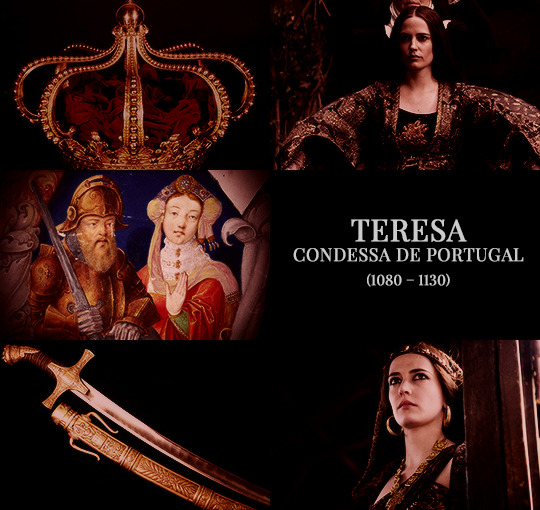




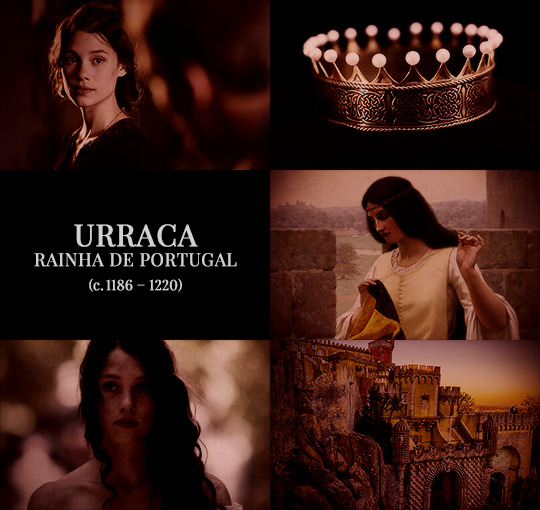
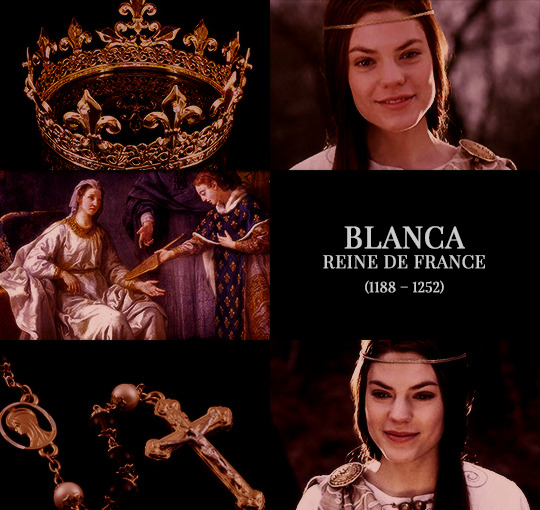

Castilian Infantas aesthetic, part I
Elvira, comtessa de Tolosa. Daughter of Alfonso VI de Castilla and Jimena Muñoz.
Teresa, condessa de Portugal. Daughter of Alfonso VI de Castilla and Jimena Muñoz.
Elvira, Regina di Sicilia. Daughter of Alfonso VI de Castilla and Zaida de Sevilla.
Constanza, reine des Francs. Daughter of Alfonso VII and Berenguera de Barcelona. Mother of Marguerite de France, Queen of England and Alais de France, comtesse du Vexin.
Sancha, Nafarroako erregina. Daughter of Alfonso VII and Berenguera de Barcelona. Mother of Berengela Nafarroakoa, Queen of England and Zuria Nafarroakoa, comtesse de Champagne.
Sancha, reina d’Aragó. Daughter of Alfonso VII and Ryksa Polska. Mother of Constança d’Aragó, Sacri Romani Imperatrix; Leonor d’Aragó, comtessa de Tolosa; and Sancha d’Aragó, comtessa de Tolosa. Grandmother of Joana de Tolosa.
Urraca, rainha de Portugal. Daughter of Alfonso VIII and Eleanor of England. Mother of Leonor de Portugal, Dronning af Danmark.
Blanca, reine de France. Daughter of Alfonso VIII and Eleanor of England. Mother of Saint Isabelle de France.
Berenguela, Latin Empress of Constantinople. Daughter of Berenguela I and Alfonso IX de León. Mother of Marie de Brienne, Latin Empress of Constantinople.
#house of jimenez#medieval#house of ivrea#historyedit#spanish history#european history#women's history#history#nanshe's graphics#royalty aesthetic
195 notes
·
View notes
Text
Fernando III el Santo
(Fernando III de Castilla y León, llamado el Santo; Monasterio de Valparaíso, Zamora, 1199/1201 - Sevilla, 1252) Rey de Castilla y de León. Con él volvieron a unirse ambas Coronas, al heredar el reino de Castilla por la muerte de su tío Enrique I (1217) y el de León por la muerte de su padre Alfonso IX (1230). Las dos herencias plantearon problemas y resistencias, salvadas gracias a la habilidad diplomática de la reina madre Berenguela.

Una vez sometidos los nobles díscolos y unificados los dos reinos, Fernando III de Castilla y de León dio un fuerte impulso a la Reconquista, aprovechando la superioridad militar obtenida sobre el Islam desde la victoria de su abuelo Alfonso VIII de Castilla en la batalla de Las Navas (1212). Dicha empresa habría de conducir a la reconquista del valle del Guadalquivir, que convirtió al reino castellano-leonés en un territorio mucho más extenso que cualquiera de sus vecinos, y en el único que conservaba frontera terrestre con el Islam (por la supervivencia del reino de Granada hasta el siglo XV).
El inicio de esa gran campaña guerrera fue aprobado en la Curia de Carrión de 1224, coincidiendo con las luchas por el poder que se abrieron entre los musulmanes al morir el sultán almohade Abú Yacub Yusuf. Una tras otra fueron cayendo en manos cristianas ciudades musulmanas tan significativas como Córdoba (1236) o Jaén (1246). Sevilla, en cambio, resistió duramente, exigiendo añadir al esfuerzo militar en tierra la actuación de la flota castellana del Cantábrico bajo el mando de Ramón Bonifaz, que asedió la ciudad por el río y bloqueó el Atlántico para impedir que llegaran refuerzos. Finalmente, Sevilla se rindió al rey Fernando en 1248.
En cambio, no consiguió completar el dominio de la Baja Andalucía con la toma de Cádiz -aunque lo intentó varias veces-, objetivo que cumpliría su hijo Alfonso X el Sabio. A la reconquista siguió la repoblación de las tierras recién incorporadas mediante repartimientos a caballeros y peones cristianos. Fernando III de Castilla murió en 1252, cuando preparaba una campaña para continuar la Reconquista hacia el norte de África; fue enterrado en la catedral de Sevilla. La Iglesia católica le canonizó en 1671.
Cómo citar este artículo: Fernández, Tomás y Tamaro, Elena. «Biografia de Fernando III el Santo». En Biografías y Vidas. La enciclopedia biográfica en línea [Internet]. Barcelona, España, 2004. Disponible en https://www.biografiasyvidas.com/biografia/f/fernando_iii.htm [fecha de acceso: 12 de noviembre de 2023].
0 notes